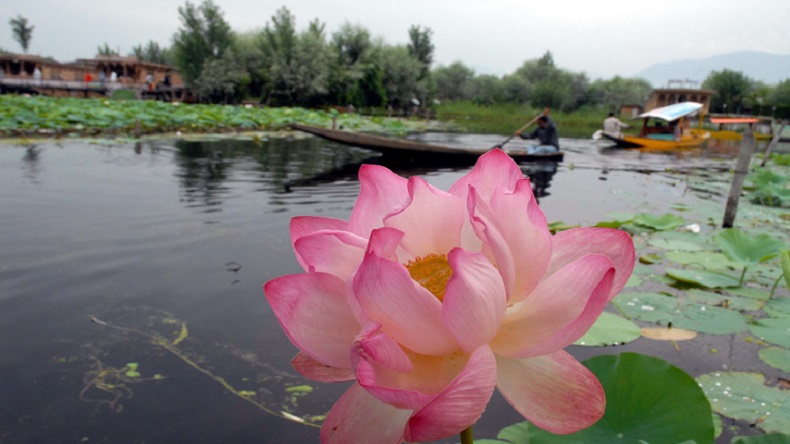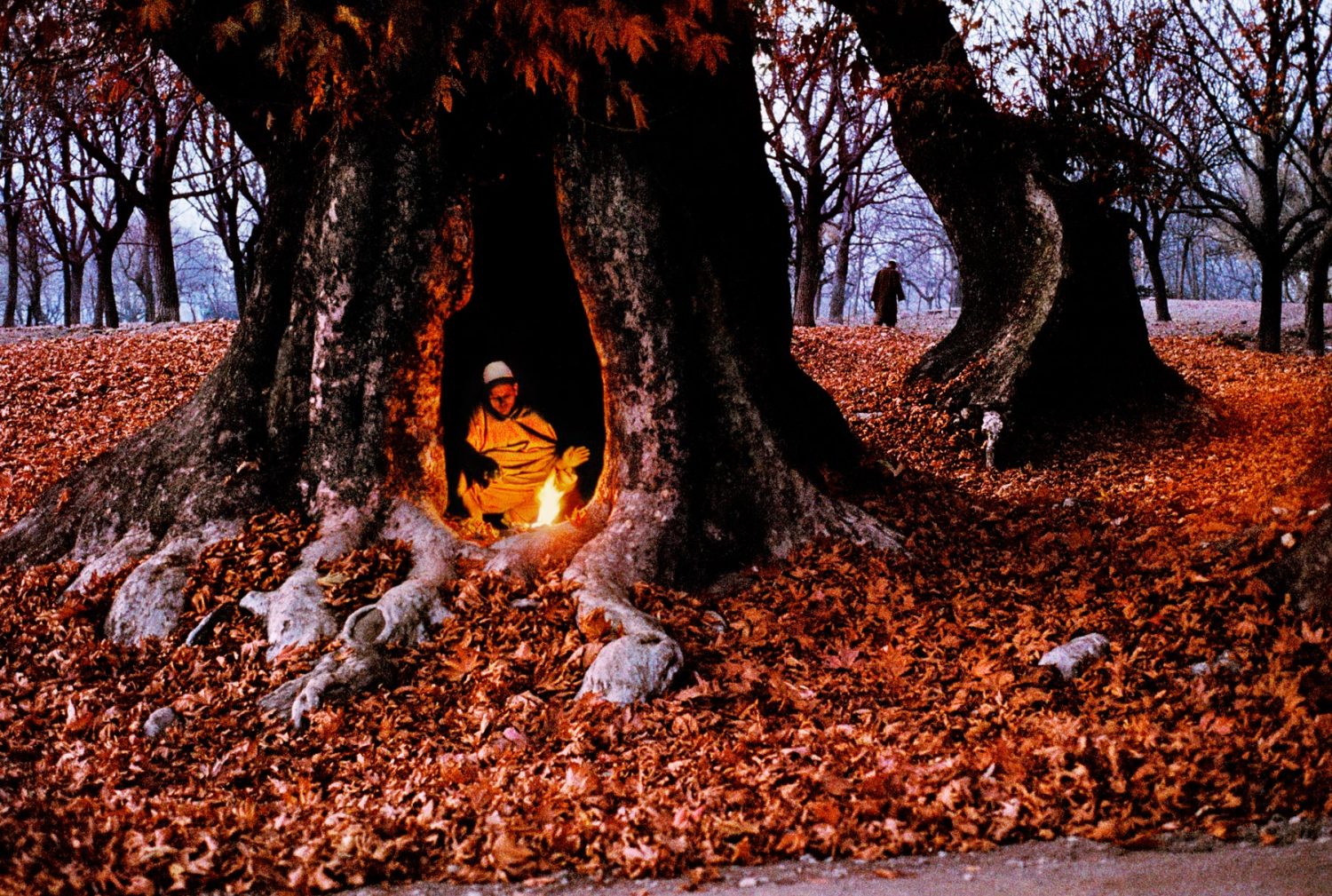While peril looms over two of Jammu and Kashmir’s state symbols — cast icons of its image in the world — the other two, flora to be precise, currently thrive.
Kashmir is naturally well-endowed and generously hallowed with biodiversity, and nature has always been integral to the culture, society and life in the valley. Although harmonious coexistence is the prime underpinning of the life in Kashmir, some of this balance is now tumbling.
And to keep tab on it, the International Union for Conservation of Nature IUCN analyses, records and classifies every documented species’ conservation status into the eight categories—Least Concern, Conservation-Dependent, Near-Threatened, Vulnerable, Endangered, Critically Endangered, Extinct-in-the-Wild, and Extinct—in order of progressively increasing severity of eradication susceptibility.
There’re two additional auxiliary classifications namely “Data-Deficient” and “Not Evaluated”.
So, how secure are the state symbols of Jammu and Kashmir?
State Bird: Black-necked Crane (Grus nigricollis)

As the last and newest crane species to be scientifically discovered and identified in the world, the Black-necked Crane was first sighted by Russian naturalist, Count Przewalski near Lake Koko Nor in north-eastern Tibet in 1876 and first reported in Ladakh in late 1919, by naturalist, F. Ludlow at Tsokar, during an ornithological study trip.
It’s a medium-sized crane, by generic standards, weighing 5.5 kgs, and measuring a little over four and a half feet in length and a tad shy of eight feet in wingspan (tip-to-tip across). A stark, conspicuous red coronet adorns its head and its white eye-patch serves as a distinctive, definitive, identification mark.
It’s classified as Vulnerable, and speculated to be on the brink of endangerment, with about 11,000 individual specimens remaining in the wild.
What poses the most major deterrent to the successful breeding, proliferation and thriving of the species is the damage to eggs and chicks caused by feral dogs (who obviously are non-native to the region) abandoned by owners and having since strayed.
These rogue dogs are owned both by armed forces as well as by the local nomads.
Another grievous threat to the bird is habitat destruction, both quantitative and qualitative. The anthropological pressure on the wetlands—the primary habitat of cranes—has dramatically risen in this century. The increased grazing stress exerted by pastoral activities on the limited pastures adjoining, flanking or even vaguely proximous to the wetlands is also leading to the degradation of the latter habitat.
Eastern Ladakh is the only known breeding ground of the Black-necked Crane outside of China. The various wetlands of the Pir Panjal range which are crucial to the ecology of the Ladakh region, serve as inhabitation, nesting and breeding sites for these birds.
At the meeting of the J&K State Board for Wildlife, erstwhile-Chief Minister Omar Abdullah had released posters of the State Bird of Jammu & Kashmir, the Black-necked Crane and the other on the high-altitude wetlands of Pir Panjal. The event was jointly convened by the WWF-India and the J&K Government’s Department of Wildlife Protection.
The WWF has worked intimately with the State Government for preservation of this rapidly-dwindling endemic denizen, that dwells this critical biome. The absence of inhabitants of a single species can usurp the delicate balance of the niche, specially such an isolated, extraordinary, and esoteric one, throwing it into abject chaos, and even a potential long-term spiral-of-doom.
State Animal: Hangul aka Kashmir Stag (Cervus hanglu hanglu)

The white-reared brown deer, a symbol of courage, might and nimble robustness lives in groups of two to eighteen individuals in dense riverine forests, high valleys, and mountains of the Kashmir valley and, northern Chamba in Himachal Pradesh.
It’s prominent, hallmark dwelling, the Dachigam National Park Reserve provides this threatened beast, a secure and sure sanctuary. However, elsewhere, the creature is at laggards, owing to immense poaching, indiscriminate pastoral expansion, overgrazing, and human encroachment into its biome.
At the dawn of the previous century, the deer numbered five thousand and were widespread in the region but grazing pastures have long since intruded in its natural habitat and for the better part of the century, it has only numbered in unsure hundreds. Two centuries of imperial and colonial hunting, preceded that by medieval royalty and post-independence poaching, all have contributed to the current crisis-laden state of the species.
It’s also found in areas of comparable altitude adjacent to Dachigam, the Rajparian Wildlife Sanctuary, Overa Aru, Sind Valley, and in the forests of Kishtwar and Bhaderwah.
Project Hangul, a systematic conservation effort undertaken by the WWF and IUCN in collaboration with Jammu and Kashmir government, was instrumental in salvaging the constantly plummeting numbers from as low as 150 in 1970 to a respectable 350 by 1980, but alas, the recovery pace couldn’t be maintained, and rather, the numbers downhilled in neglect owing to gradual but sure, passive, insidious destruction.
Today, the population of Hangul precariously hangs in balance, a few scores shy of the tipping point. It was reportedly as low as 160 in 2008, and a meagre 186 in 2015. Captive breeding and subsequent reintroduction-into-the-wild measures are anticipated and being considered and mulled by all organisations concerned with it. Animal corridors that serve to bypass omni-prevalent forest fragmentation by liaising individual compartmentalised tracts are also being utilised as part of rescue endeavours.
According to an article in The Hindu, a recent survey conducted by collaring Hangul has revealed that the species is no longer confined within the delimitations of Dachigam National Park. The endangered species has now begun to use an old migratory route which spread through Sind Valley upto Tulail in Gurez Valley.
The corridor was last known to be active in the early 1900s. This unprecedented alleviation has surpassed expectations and is an imbibing ray in the utter, bleak scenario that looms over the species existence.
“The Hangul population in the Dachigam landscape now appears to have low genetic variation compared with other species and thus could be susceptible to the effects of inbreeding,” the IUCN Red List feature for the beast reads, quoting a research study.
The Hangul has thus rightfully warranted a Critically Endangered classification.
State Flower: Lotus (Nelumbo nucipera)

Several thousands of Kashmiri locals depend upon lotus cultivation and stem harvesting for deriving their livelihood. As a source of sustenance, it was adversely affected by the 2014 Floods which obliterated the seeds. However, the activity is currently teeming, as never before, a testimony to the perseverance and prowess of the people of the land.
The picturesque Dal Lake is a major source of Lotuses, whose stalks vernacularly termed as ‘Nadru’ are used to make the famed staple delicacy Nadru Yakhni, an aromatic spice-flavoured yogurt-based luxuriant curry.
The plant is currently classified under Least Concern status, owing to its copious ubiquity all over the lakes of the state. Human intervention and cultivation activities have boosted its abundance as well. It’s also an aesthetic attraction for tourist visitors.
State Tree: Chinar (Platanus orientalis)

The iconic 100-footer tree, immortalised in art and literature, both classical and contemporary, exquisitely captures the essence of life in Kashmir.
A classic motif for steadfast determination, its virtue of being a safe-haven, placation, comfort, pacification, solace, reconciliation, unity, prosperity, and perseverance, the tree natively called a booyn, being gigantic in stature, with broad, thick leaves that tend to orient horizontally, is particularly-prized for the shade and coolness it offers during summers.
The tree, albeit abundant and hence appropriating a least-concern status, has suffered mild deforestation due to recent settlement boom. Certain government measures attributable to deficient-planning have also hampered contiguity of the sprawling forest cover. Skirmishes, agitation and warfare have also damaged certain forest tracts beyond repair, although this is an ill-established premise.
And therefore, devising an integral and comprehensive approach that doesn’t alienate local communities and other denizens, is crucial to preservation efforts of these state symbols.
A Jharkhand-based journalist, Pitamber Kaushik has previously written for The Telegraph, The Gulf News, The Sunday Independent, The New Delhi Times, The Madras-Courier, amongst others.
Like this story? Producing quality journalism costs. Make a Donation & help keep our work going.








